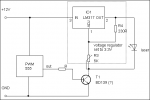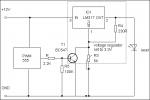3zuli
0
- Joined
- May 30, 2009
- Messages
- 810
- Points
- 28
hi, I'm currently modding my spiro and I want to add PWM to the laser. I want to use this schematic (with other transistor)

I need to blank green module + LM317 voltage regulator (set to 3.3V). the laser has it's own driver (LM317 just lowers the voltage)
is it possible (safe) to connect it like this? I don't wanna kill my green module

I need the answer ASAP :thanks:

I need to blank green module + LM317 voltage regulator (set to 3.3V). the laser has it's own driver (LM317 just lowers the voltage)
is it possible (safe) to connect it like this? I don't wanna kill my green module
I need the answer ASAP :thanks:
Attachments
Last edited:







